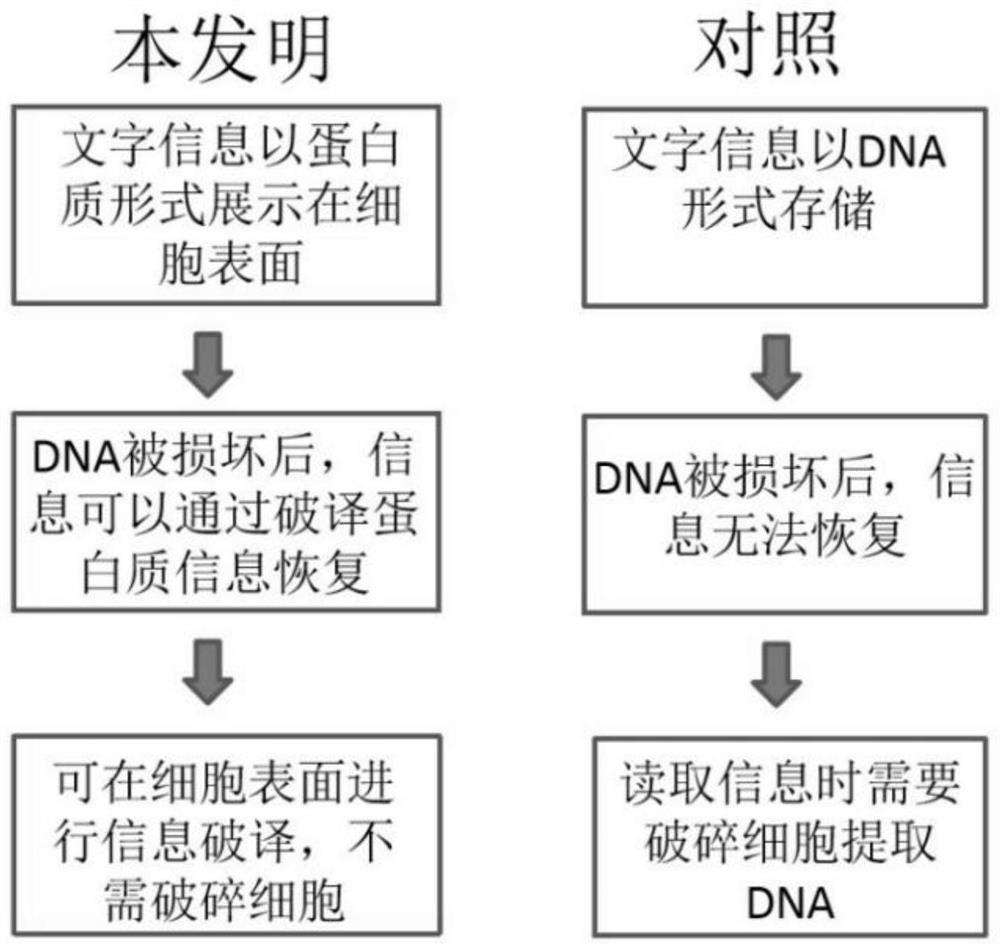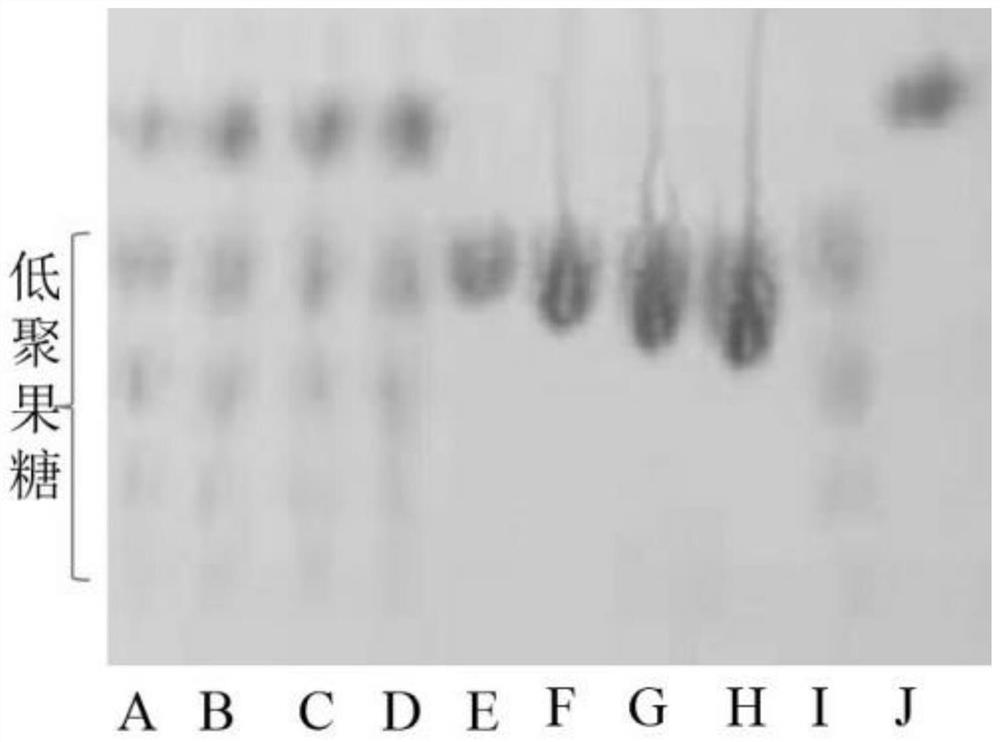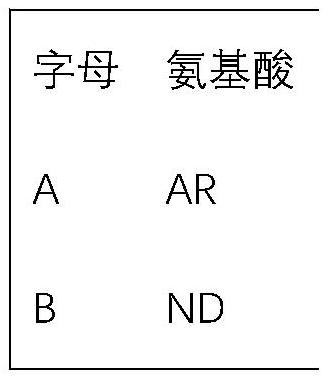Method for displaying character information on surface of cell
A text information, cell surface technology, applied in the field of information storage, can solve the problems of data can not be recovered, no protein display and other problems, to save the extraction of DNA or protein, save the tedious process effect
- Summary
- Abstract
- Description
- Claims
- Application Information
AI Technical Summary
Problems solved by technology
Method used
Image
Examples
Embodiment 1
[0018] Embodiment 1 A method for displaying textual information in the form of protein on the surface of Pichia pastoris cells and its application, including the following steps:
[0019] (1) Convert the English name "YOUMINZHU" into amino acid information (SEQ ID No.1) as shown in the table below, with one letter for every two amino acid codes, or other coding methods, such as three or more amino acid codes for one letter;
[0020] The coding table that present embodiment adopts is as follows:
[0021]
[0022]
[0023] (2) Convert amino acid information into DNA information (SEQ ID No.2);
[0024] (3) The sequence (SEQ ID No.3) of the improved anchor protein, the name information sequence (SEQ ID No.2) and the β-galactosidase sequence (SEQ ID No.4) are fused into a gene (SEQ ID No.4) ID No.5), the two ends of the fusion gene contain carrier homology arm sequences, and the DNA information sequence serves as the connecting peptide between the anchor protein and the β-g...
Embodiment 2
[0049] Embodiment 2 A method for displaying textual information in the form of protein on the surface of Pichia pastoris cells and its application, including the following steps:
[0050] (1) Convert the English name "YOUMINZHU" into amino acid information (SEQ ID No.1);
[0051] (2) Convert amino acid information into DNA information (SEQ ID No.2);
[0052] (3) The improved anchor protein sequence (SEQ ID No.3), name information sequence (SEQ ID No.2), connecting peptide sequence (SEQ ID No.6) and β-galactosidase sequence (SEQ ID No.4) is fused into a gene (SEQ ID No.7), the two ends of the fusion gene contain carrier homology arm sequences, and the DNA information sequence is used as a part of the connecting peptide between the anchor protein and the β-galactosidase sequence;
[0053] (4) Chemically synthesize the fusion sequence of the anchor protein sequence shown in SEQ ID No.7, the DNA message sequence, the connecting peptide sequence and the β-galactosidase sequence. ...
Embodiment 3
[0075] Embodiment 3 A method for displaying text information in the form of protein on the surface of Pichia pastoris cells and its application, including the following steps:
[0076] (1) Convert the English name "YOUMINZHU" into amino acid information (SEQ ID No.1);
[0077] (2) Convert amino acid information into DNA information (SEQ ID No.2);
[0078] (3) Chemically synthesize the sequence of the improved anchor protein (SEQ ID No.3), and add the carrier homology arm sequence to the front end;
[0079] (4) Chemically synthesize the fusion sequence (SEQ ID No.8) of the name information sequence and the connecting peptide sequence, and add homology arm sequences before and after;
[0080] (5) Chemically synthesize the improved β-galactosidase sequence (SEQ ID No.4), and add the carrier homology arm sequence at the back end;
[0081] (6) The vector pPIC9K is digested with EcoRI and Not1, and the enzyme digestion system is as follows:
[0082]
[0083] (7) Recombine the ...
PUM
 Login to View More
Login to View More Abstract
Description
Claims
Application Information
 Login to View More
Login to View More - Generate Ideas
- Intellectual Property
- Life Sciences
- Materials
- Tech Scout
- Unparalleled Data Quality
- Higher Quality Content
- 60% Fewer Hallucinations
Browse by: Latest US Patents, China's latest patents, Technical Efficacy Thesaurus, Application Domain, Technology Topic, Popular Technical Reports.
© 2025 PatSnap. All rights reserved.Legal|Privacy policy|Modern Slavery Act Transparency Statement|Sitemap|About US| Contact US: help@patsnap.com



